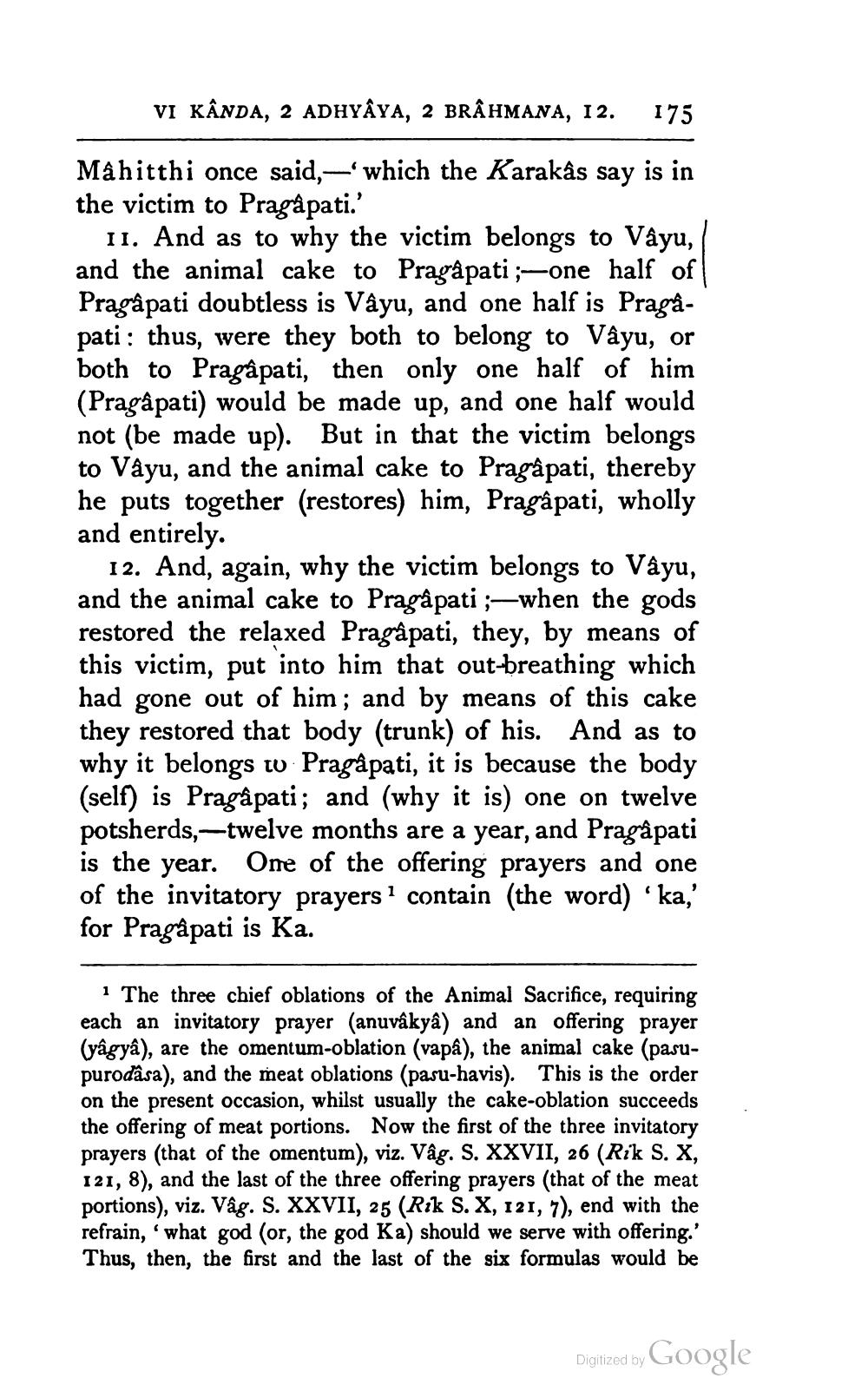________________
VI KANDA, 2 ADHYÂYA, 2 BRÂHMANA, 12. 175
Mâhitthi once said,-which the Karakâs say is in the victim to Pragâpati.'
II. And as to why the victim belongs to Vâyu, and the animal cake to Pragâpati;-one half of Pragâpati doubtless is Vâyu, and one half is Pragâpati thus, were they both to belong to Vâyu, or both to Pragâpati, then only one half of him (Pragâpati) would be made up, and one half would not (be made up). But in that the victim belongs to Vâyu, and the animal cake to Pragâpati, thereby he puts together (restores) him, Pragâpati, wholly and entirely.
12. And, again, why the victim belongs to Vâyu, and the animal cake to Pragâpati ;-when the gods restored the relaxed Pragâpati, they, by means of this victim, put into him that out-breathing which had gone out of him; and by means of this cake they restored that body (trunk) of his. And as to why it belongs to Pragâpati, it is because the body (self) is Pragâpati; and (why it is) one on twelve potsherds,—twelve months are a year, and Pragâpati is the year. One of the offering prayers and one of the invitatory prayers1 contain (the word) 'ka,' for Pragâpati is Ka.
1 The three chief oblations of the Animal Sacrifice, requiring each an invitatory prayer (anuvâkyâ) and an offering prayer (yâgyâ), are the omentum-oblation (vapâ), the animal cake (pasupurodâsa), and the meat oblations (pasu-havis). This is the order on the present occasion, whilst usually the cake-oblation succeeds the offering of meat portions. Now the first of the three invitatory prayers (that of the omentum), viz. Vâg. S. XXVII, 26 (Rik S. X, 121, 8), and the last of the three offering prayers (that of the meat portions), viz. Vâg. S. XXVII, 25 (Rik S. X, 121, 7), end with the refrain, 'what god (or, the god Ka) should we serve with offering.' Thus, then, the first and the last of the six formulas would be
Digitized by
Google




